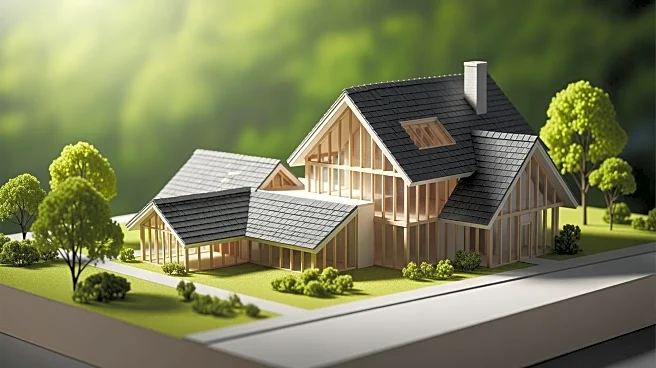What's Happening?
Several architectural firms have embraced the use of shingles in their home designs, creating structures that blend seamlessly with their natural surroundings. These shingles, often made from wood, provide a tactile and durable facade that mimics natural textures.
Notable projects include the Somes Sound House in Maine by Matthew Baird Architects, which uses cedar shakes to respect its forested environment, and the Waterhouse in Quebec by Oyama and Julia Manaças Architecte, which features cedar shingles to unify its divided volumes. Other examples include the Mountain Cottage in Poland by HOLA Design, which uses black-painted aspen shingles for a modern chalet look, and the CiAsa Aqua Bad Cortina in Italy by Pedevilla Architects, which utilizes locally sourced larch shingles. These designs highlight a trend towards environmentally conscious architecture that prioritizes local materials and minimal environmental impact.
Why It's Important?
The use of shingles in architectural design reflects a growing trend towards sustainability and environmental integration in the construction industry. By choosing materials that blend with natural surroundings, architects are reducing visual pollution and promoting eco-friendly practices. This approach not only enhances the aesthetic appeal of homes but also supports local economies by utilizing locally sourced materials. The emphasis on sustainability is crucial as the construction industry faces increasing pressure to reduce its carbon footprint and environmental impact. These projects demonstrate how innovative design can meet these challenges, offering a model for future developments in eco-friendly architecture.
What's Next?
As the demand for sustainable architecture grows, more firms are likely to adopt similar practices, using shingles and other natural materials to create environmentally harmonious designs. This trend may lead to increased collaboration between architects and local craftsmen, fostering community engagement and economic growth. Additionally, regulatory bodies may introduce incentives for sustainable building practices, encouraging wider adoption across the industry. The success of these projects could inspire further innovation in material use and design, potentially influencing urban planning and development strategies to prioritize ecological considerations.
Beyond the Headlines
The use of shingles in architecture not only addresses environmental concerns but also raises questions about cultural heritage and the preservation of traditional building techniques. By incorporating materials like cedar and larch, architects are reviving age-old practices that connect modern structures to historical craftsmanship. This approach may lead to a resurgence in traditional skills and a deeper appreciation for cultural heritage in contemporary design. Furthermore, the tactile quality of shingles offers a sensory experience that enhances the connection between inhabitants and their environment, promoting well-being and a sense of place.















